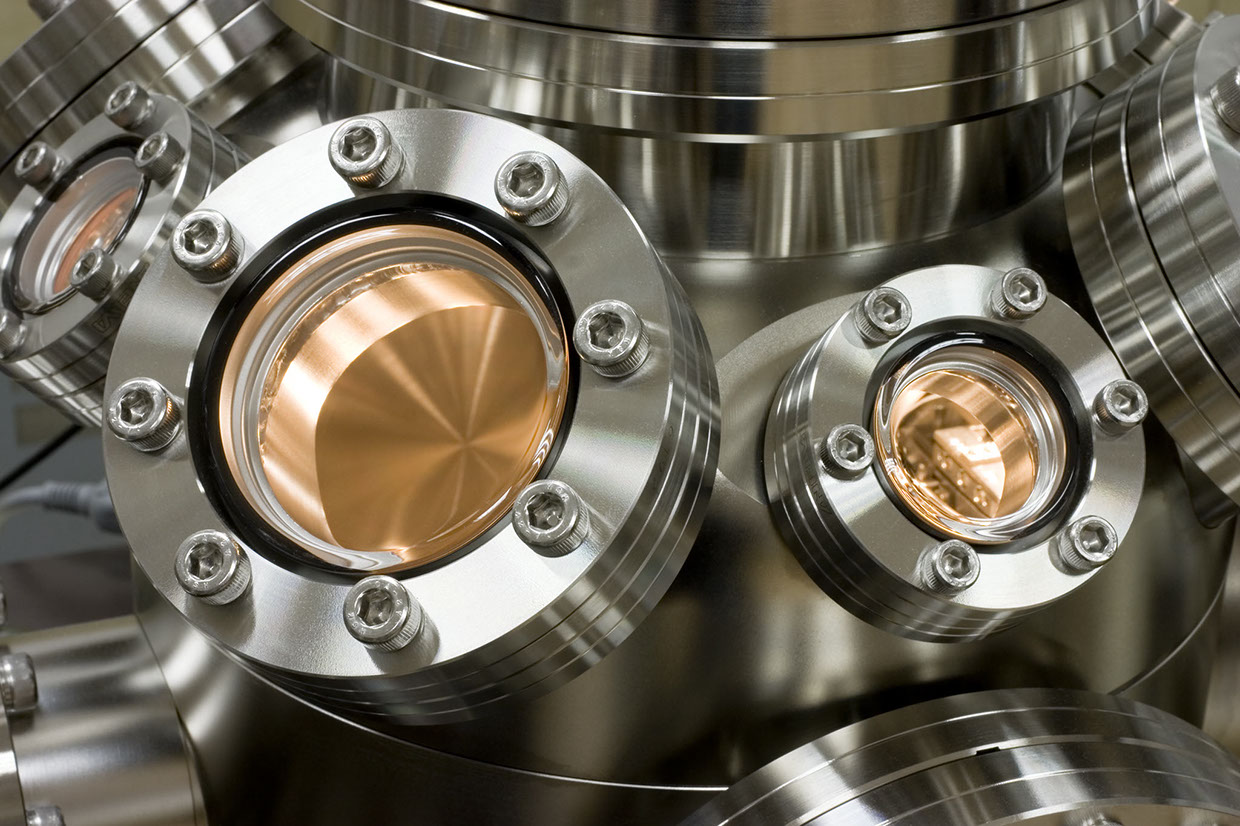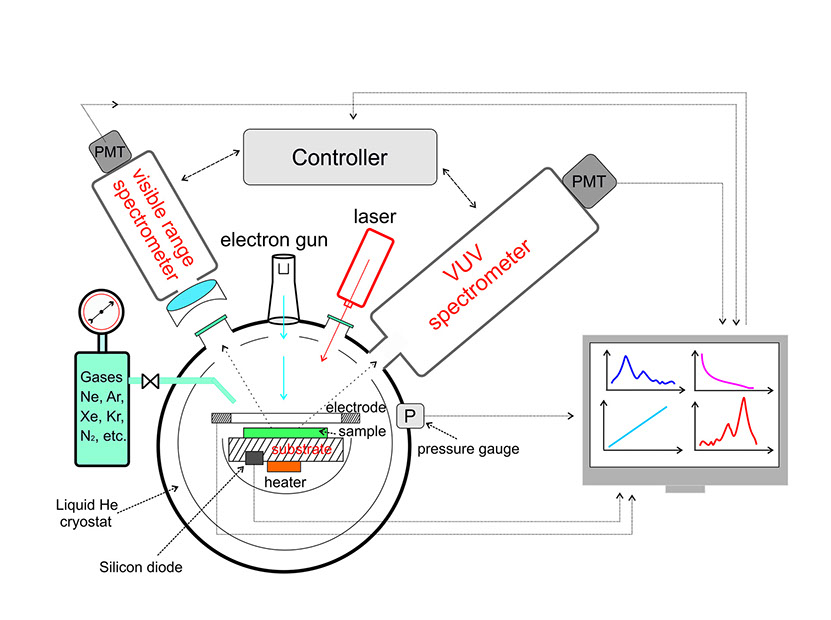
Multifunctional complex for optical and current spectroscopy of cryocondensates, nanostructures, and bulk materials
Abstract:
The spectral multifunctional complex can be applied for study of electronic structure, dynamics and relaxation processes of cryogenic materials as well as of wide variety of new prospective materials and composites. It is especially suitable for study of radiation effects, stability of radiation-induced centers and defect-level analysis. Application of the developed new methods – nonstationary luminescence (NsL) and nonstationary desorption (NsD), permits to reveal contribution of charged states in radiation-induced processes. Essential advantage of the spectral multifunctional complex is its capability to detect all relaxation emission from the same sample in correlated manner which ensures obtaining of reliable results.
Description:
The complex comprises cryogenic system, vacuum system, system for cryogenic sample preparation „in-situ“, excitation of samples (electron gun, photon sources), spectrometers covering range from near infrared to vacuum ultraviolet, optical system of registration , system of relaxation current measurement, detector of particle emission and software package.

Technical capabilities:
• Wide spectral range (NIR – VUV):;
• Open sample surface;
• Variable excitation energy of photon sources and electron beam (100 eV – 3 keV);
• Correlated in real time registration of optically and thermally stimulated luminescence, electron emission and own particle emission;
• Measurements of nonstationary luminescence and desorption;
• Registration of radiation-induced absorption;
• Temperature range: 1.5 – 300K.
Application area:
Application area of the multifunctional spectral complex includes investigation and characterization of wide range of materials, including cryocondensates (rare gas solids, solid nitrogen, methane, hydrogen etc.), matrix-isolated species and nanostructures, as well as different insulating materials and semiconductors.
Innovative aspect:
Developed by us techniques of nonstationary luminescence NsL and nonstationary desorption NsD enable to probe neutralization reactions under irradiation. These original two-stage techniques are based on some kind of "pump-probe" experiments with controlled in situ "injection" of electrons via their release from the traps stimulated by the sample heating. In the first stage charged centers are generated by an intense electron beam. In the second stage the produced positively charged centers are probed by recording recombination luminescence and particle emission induced by low-density electron beam under gradual heating.
Main advantages:
The main advantages of the described spectral complex is its multifunctionality. Both luminescence and absorption spectra can be detected in wide spectral range from NIR up to VUV. Variation of electron energy permits to probe samples with depth. Employment of the developed techniques NsL and NsD provides additional opportunities in charge state investigation. Capability to detect after irradiation all relaxation emission (electrons, photons and particles) from the same sample in correlated manner ensures reliable results.
Key words:
Cryocondensates, functional materials, optical and current spectroscopy.
Last updated: 03/08/2025
Contacts
47 Nauky Ave., Kharkiv, 61103, Ukraine
tel.: +380(57)341-0918
fax: +380(57)340-3370
© 2017-2025, Design by Anton Klimkin
Executive editor: V.A.Gudimenko
v.2024.2.10


